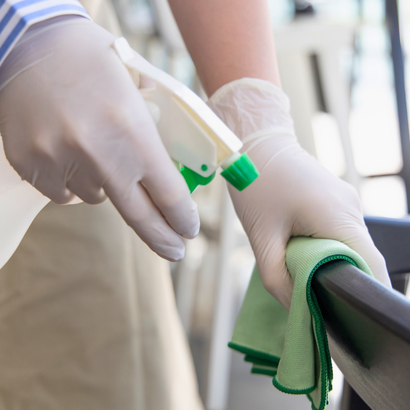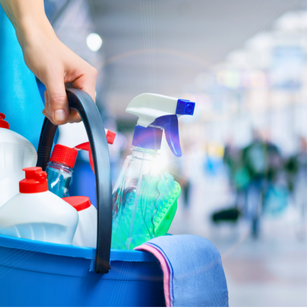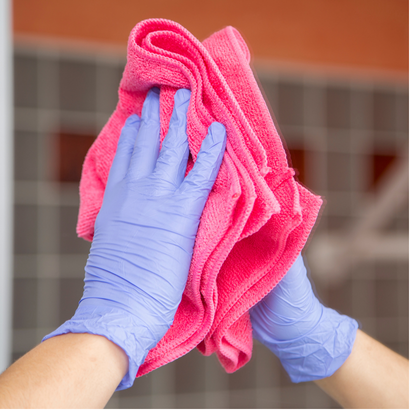Maintaining hygiene standards in educational institutions is crucial. It ensures a safe and healthy environment for students and staff. Compliance with these standards is not just a legal obligation but a moral one.
Schools face unique challenges in maintaining cleanliness. High foot traffic and shared spaces increase the risk of infection. Effective hygiene practices can significantly mitigate these risks.
Understanding school hygiene regulations is essential. It helps institutions implement effective cleaning and safety protocols. This guide will provide insights into achieving cleaning compliance for schools and help you find the right school cleaning services.
Infection control in schools is a priority. Proper sanitation and hygiene practices can prevent outbreaks. This guide will explore best practices and protocols for infection control.
Educational institutions must foster a culture of health and safety, and engaging staff, students, and the broader community is key. Together, they can ensure a safe learning environment for everyone.
The Importance of Hygiene Standards in Educational Institutions
Implementing hygiene standards in educational settings is vital. It minimises the risk of spreading infections among students and staff. Clean environments promote better health and learning outcomes, helping to create a safe learning space.
Hygiene is not merely about cleanliness. It’s about creating a safe place for education. Institutions must focus on both visible and invisible threats to health.
Compliance with school hygiene regulations can bolster health and safety in education. These regulations guide schools in maintaining high standards of education. Regulatory compliance also shields schools from potential legal issues.
Hygiene impacts more than just health; it also affects learning. Unclean environments can lead to student absences due to illness, which in turn can lower attendance rates and adversely affect academic performance.
Key benefits of maintaining hygiene standards include:
- Reducing illness-related absences
- Creating a safe learning environment
- Enhancing the reputation of the institution

Schools must prioritise hygiene to benefit everyone involved. Adhering to standards contributes to a thriving educational community, fostering both health and learning success.
Understanding School Hygiene Regulations and Legal Requirements
Understanding school hygiene regulations is essential for ensuring compliance and maintaining a safe environment. Legal requirements serve as a foundation for consistent practices across all educational settings.
Each institution must adhere to local and national standards. These regulations often encompass areas like cleaning procedures, waste disposal, and infection control measures. By aligning with these standards, schools protect themselves and their communities.
Failure to comply with hygiene standards can have profound legal implications. Non-compliance can lead to penalties or reputational damage. It’s essential to understand and implement all required measures promptly.
For comprehensive compliance, institutions should focus on:
- Regular review of applicable regulations
- Ensuring that staff are well-informed
- Updating practices as regulations evolve
Regular training and audits are essential for maintaining compliance. Schools can benefit from collaborating with health authorities to enhance understanding. This partnership facilitates effective implementation and demonstrates a commitment to health and safety.
By understanding and implementing regulations, schools can create safe and compliant learning environments that foster a positive learning experience.
Key Components of Cleaning Compliance for Schools
Maintaining cleaning compliance in schools is crucial to preventing the spread of disease. It requires a well-structured approach to hygiene practices. School administrators must focus on key components to ensure effective compliance with regulations. For additional insights, see Everbrite Cleaning’s guide on school cleaning standards.
Establishing a regular cleaning schedule is essential. This schedule should cover all areas, particularly high-touch surfaces such as doorknobs and desks. Implementing sanitation protocols ensures these areas remain consistently clean.
Proper sanitation practices are not just about frequency but also technique. Using the right cleaning products and equipment enhances efficiency. It’s essential to follow the manufacturer’s guidelines for the use and storage of cleaning agents.
Schools should develop checklists to ensure every area receives attention. Key points may include:
- Daily cleaning of classrooms and restrooms
- Weekly deep cleaning tasks
- Immediate action on spills and contamination incidents

Staff training plays a significant role in maintaining compliance. Continuous education on updated cleaning methods helps maintain high standards. Additionally, using eco-friendly products supports both health and environmental goals.
By focusing on these components, schools can maintain a cleaner and safer environment. This proactive approach minimises health risks and promotes a culture of cleanliness.
Infection Control in Schools: Best Practices and Protocols
Infection control is crucial for maintaining a healthy school environment. It helps to reduce the transmission of infectious diseases among students and staff. Implementing effective strategies is essential to achieve this goal. For comprehensive guidance, refer to the Public Health Agency’s Infection Control Guide.
Hand hygiene is a cornerstone of infection control. Schools should encourage regular handwashing with soap and water. Hand sanitiser dispensers should be available throughout the premises, especially in high-traffic areas.
Respiratory etiquette is equally important. Students and staff should cover their mouths and noses when sneezing or coughing to prevent the spread of germs. Tissues should be readily available, and bins should be placed in classrooms and common areas.
A consistent cleaning routine is essential for infection control. Particular attention should be given to frequently touched surfaces. Protocols should include:
- Daily disinfection of door handles, light switches, and desks
- Regular cleaning of shared equipment and supplies
- Scheduled ventilation checks in all areas

Another vital component is educating the school community on infection control practices. Regular workshops and information sessions can significantly boost awareness. Empowering students with knowledge helps create a collective responsibility for maintaining good health.
By prioritising best practices and protocols, schools can enhance safety. Proactive infection control fosters a healthier learning environment, paving the way for better education outcomes.
Developing and Implementing a Comprehensive Hygiene Policy
Creating a comprehensive hygiene policy is vital for any educational institution. This policy provides a structured approach to maintaining cleanliness and safety. It should address all aspects of hygiene management. To incorporate food hygiene, schools can refer to the CPD Online College’s Food Safety Guide for Schools.
The policy must outline specific cleaning protocols and schedules in detail. Clear guidelines ensure consistency in hygiene practices across the institution. Staff roles and responsibilities related to cleanliness should be clearly defined.
Conducting regular evaluations of the hygiene policy is crucial. Feedback from these assessments can help refine and improve practices. The policy should be dynamic, allowing for adjustments as new challenges arise.
Key components of a comprehensive hygiene policy should include:
- Cleaning protocols for different areas (classrooms, restrooms, common areas)
- Procedures for handling waste safely
- Guidelines for personal hygiene practices, such as handwashing
- Training and awareness programs for staff and students
- Emergency response plans for infectious disease outbreaks
An effective hygiene policy doesn’t work in isolation. Involvement from all school stakeholders ensures its success. School leaders should promote a culture of hygiene and uphold standards diligently.
Training and Engaging Staff, Students, and the Community
Training plays a pivotal role in maintaining hygiene standards in schools. Staff should receive regular, updated training on cleaning protocols and hygiene practices to ensure they are up-to-date and effective. This ensures compliance and reduces health risks. The National Education Union’s hygiene advice can support staff training programs.
Engagement is crucial in fostering good habits among students. Schools should implement awareness programs to teach students about the importance of hygiene. Interactive sessions or workshops can make learning about hygiene an engaging experience.
The wider community should also be involved in promoting hygiene standards. Parents and local organisations can support schools by participating in cleanliness campaigns. Collaboration fosters a strong commitment to a healthy environment.
Essential aspects of training and engagement include:
- Regular training sessions for staff on hygiene protocols
- Interactive hygiene workshops and activities for students
- Community involvement through cleanliness campaigns and discussions
By training and engaging everyone, schools can promote a culture of health and safety, benefiting students and the entire school community.
Monitoring, Auditing, and Continuous Improvement
Regular monitoring is crucial to ensure adherence to hygiene standards. Schools should implement consistent inspections to identify areas needing improvement. These inspections help maintain a high level of cleanliness.
Auditing procedures are necessary to verify compliance with cleaning protocols. Audits can be conducted internally or by external agencies. This objective evaluation provides valuable insights into the school’s hygiene practices.
Continuous improvement involves adapting and evolving hygiene practices to ensure optimal performance. Schools should regularly update their hygiene policies based on feedback and emerging challenges, adopting a dynamic approach that ensures ongoing effectiveness in maintaining a healthy environment.
Key strategies include:
- Implementing regular inspections and audits
- Using feedback to refine and enhance hygiene practices
- Adapting policies to meet new health challenges
Through monitoring and auditing, schools can achieve continuous improvement, ensuring a safe and hygienic environment for everyone.
Addressing Challenges and Ensuring Equity in Hygiene Practices
Educational institutions face various challenges in maintaining hygiene standards. Limited resources and diverse student needs can complicate compliance efforts. Addressing these challenges requires strategic solutions and commitment.
Ensuring equity in hygiene practices is vital. All students deserve access to clean and safe facilities, regardless of background. Equitable resource distribution helps bridge the gap between schools with different levels of funding.
Effective strategies include:
- Prioritising resource allocation to underfunded schools
- Adapting hygiene practices to meet diverse needs
- Ensuring inclusivity in policy development
By focusing on equity and overcoming challenges, schools can foster an inclusive environment where every student feels safe and valued. This approach not only improves health outcomes but also promotes a culture of fairness and care within the educational community.
Leveraging Technology and Innovation for Hygiene Compliance
Technology plays a crucial role in enhancing school hygiene. Innovative solutions can streamline compliance efforts and improve sanitation. Digital tools can help monitor cleanliness in real-time, providing staff with quick feedback.
Key innovations include:
- Automated cleaning systems
- Sensors for air quality monitoring
- Mobile apps for hygiene tracking

These technologies not only improve hygiene but also boost efficiency. By incorporating innovation, schools can ensure robust hygiene standards while minimising manual effort and optimising resources. This approach leads to a healthier, safer educational environment.
Case Studies and Success Stories
Real-world examples highlight effective hygiene practices in schools. They inspire and guide institutions in enhancing their standards. Successful programs demonstrate how commitment to cleanliness benefits the educational environment.
Key takeaways from successful schools include:
- Implementing strict cleaning schedules
- Engaging students in hygiene initiatives
- Utilising eco-friendly cleaning products

By learning from these success stories, schools can adopt proven strategies. This can lead to improved student health and a stronger sense of community responsibility. Embracing these methods paves the way for sustained success in hygiene compliance.
Conclusion: Building a Culture of Health and Safety in Education
Creating a culture of health and safety is crucial for educational institutions. It involves fostering an environment where hygiene practices are integrated into daily routines. This commitment supports the well-being of both students and staff.
By prioritising effective infection control and cleaning compliance, schools ensure a safe learning space. Engaging the entire school community in these efforts strengthens overall health outcomes. Ultimately, embracing comprehensive hygiene standards enhances educational experiences for everyone involved.

 We use cookies on our website to give you the most relevant experience by remembering your preferences and repeat visits. By clicking “Accept”, you consent to the use of ALL the cookies.
We use cookies on our website to give you the most relevant experience by remembering your preferences and repeat visits. By clicking “Accept”, you consent to the use of ALL the cookies.